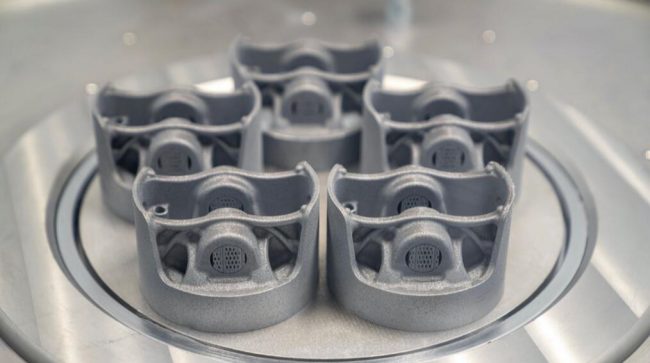Porsche recently revealed its landmark additive manufacturing application for high-stress drive components – via powder bed selective laser melting3D printingTechnology produced for the 911 GT2 RS twin-turbo enginepiston. In this application, weight reduction through the design for additive manufacturing is not the only goal. Porsche also optimizes the design of the piston to make the engine more powerful and more efficient.In this issue, 3D Science Valley will share more about this3D printingAdditive manufacturing-oriented design ideas for pistons.
![]() Designs that cannot be achieved with traditional techniques
Designs that cannot be achieved with traditional techniques
Porsche3D printingThe 911 GT2 RS engine pistons, which are 10% lighter than the original, have increased engine speed by 300rpm and increased power by almost 30bhp. Pistons in high-performance engines are subjected to enormous pressure due to loads and heat, and are often cast or forged from aluminum alloys.Porsche with Mahle and Metal3D printingEquipment manufacturer Trumpf has collaborated to develop an additive manufacturing process for engine pistons. The printing material is an aluminum alloy powder, which is divided into 1200 layers to complete the additive manufacturing of the piston.
 3D printingPiston” alt=”3D printingPiston” width=”620″ height=”346″ />
3D printingPiston” alt=”3D printingPiston” width=”620″ height=”346″ />
3D printingpiston.Source: Porsche
in progress3D printingDuring the piston design, the development team used topology optimization software to identify areas of high force so that the correct amount of material could be used in each area. The circular hole in the piston has a temporary support structure that prevents sagging and deformation as the alloy heats up due to the heat of the laser. These support structures are formed inside the piston like honeycombs, like piston pinholes, and are post-processed by machining anyway.
The most valuable design idea in this application case is that the development team adopted a function-integrated design in the piston, which is also an optimized design that cannot be achieved by traditional casting technology and is specially designed according to the characteristics of additive manufacturing technology.3D printingThe piston development team introduced the design of internal cooling ducts, and the cooling oil flowing through the ducts helps seal the piston to the critical area behind the cylinder’s piston rings and reduces piston temperature by 20 degrees Celsius.tiny integrated in the piston3D printingFuel injectors supply oil to the pipeline. This complex injector is also impossible to manufacture using conventional technology. The development team enhanced the strength through a software-implemented “bionic” design. The cross-section of the piston looks very similar to structures formed in nature, such as biological muscles, tendons, and bones.
According to the needs of the current project,3D printingPiston development team can make 5 pistons in 12 hours, expect to use more efficient3D printingDevices can increase the number to 15. Six pistons have so far been tested in the 911 GT2 RS engine for 200 hours of operation.
3D printingThe development of the piston also requires more technology to ensure quality consistency, but Porsche says the technology could be used in series-produced car engines within the next five years.Porsche is experimenting more with additive manufacturing, according to 3D Science Valley Market WatchPowertrain ComponentsPossibilities for design optimization, such as the development of turbochargers3D printingIntercooler to improve cooling flow and surface area, this component also works on electric axle drives with integrated oil coolers.
(responsible editor: admin)


0 Comments for “Design optimization ideas behind Porsche’s landmark 3D printed piston”